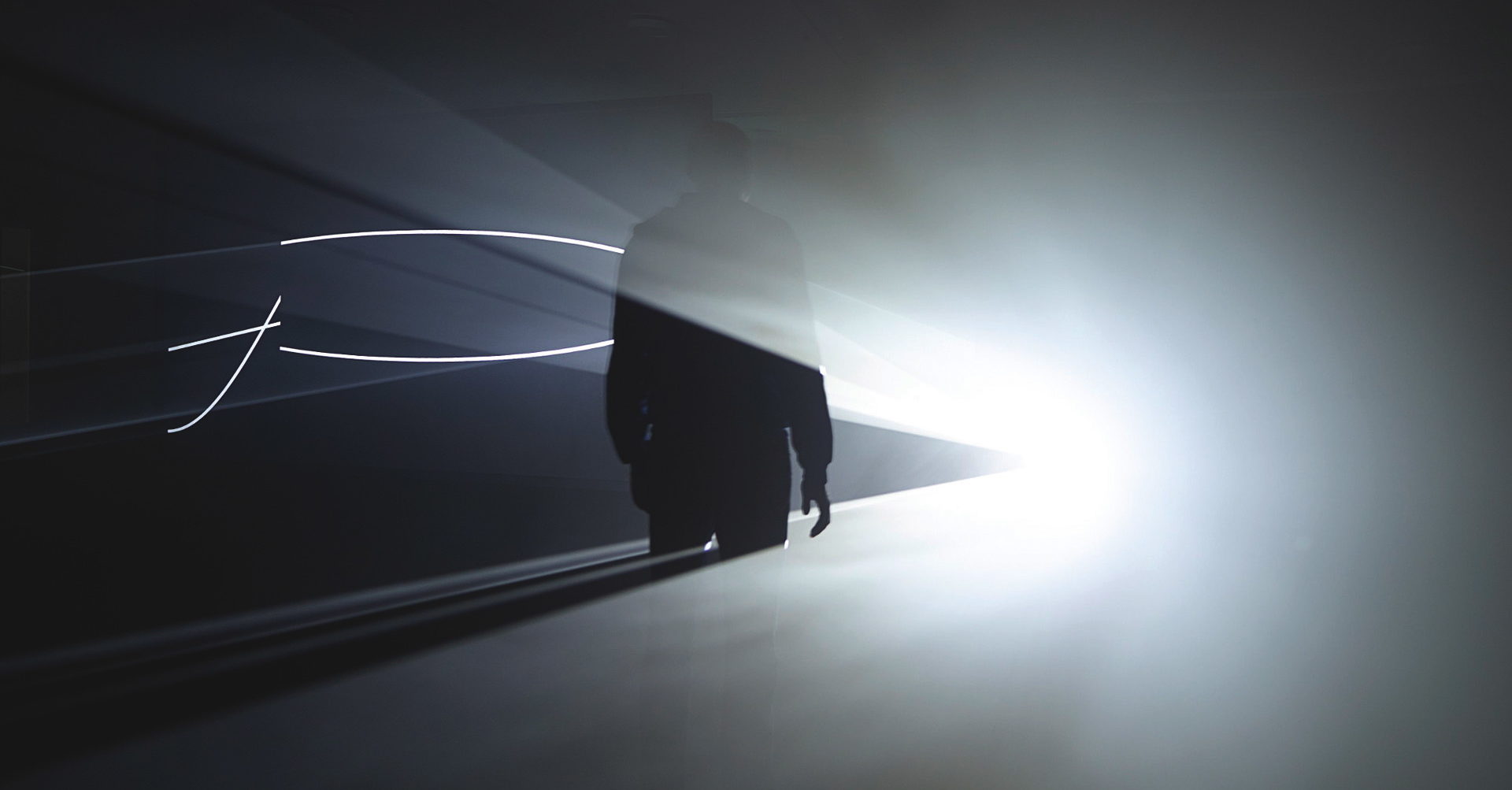Preview
Anthony McCall
New York-based artist Anthony McCall has spent decades exploring how light becomes art. A new exhibition invites visitors to become part of the process
Stunningly simple in both concept and execution, Anthony McCall’s “solid light works” are, as described by the artist himself, very much mixed media. “The pieces exist in a space where cinema, sculpture and drawing overlap. And the vertical works are architectural too: 10 metre tall tents of light with apertures people treat almost like doorways, moving themselves inside a form made of light.”
McCall, Kent-born but based in Manhattan since the early 1970s, began creating his light series while confronting a facet of filmmaking that fascinated him: why everything on screen has already happened, is historical and took place in a different space to the viewer.
“I began to ask the question, to wonder, if it was possible to make a film which only existed in the moment you were looking at it and only took place in the room you were standing in. That riddle, that problem, led to my first solid light film, Light Describing a Cone.”
That work – a line of light evolving into a volumetric, three-dimensional composition – was created during 1973 and for the remainder of the decade McCall refined and reimagined his vision. However, the technological restrictions of film projectors – relating to size and weight, the need to situate them on a horizontal surface and the maximum running time of a 16mm reel – led to a temporary retreat from the form as the 1970s drew to a close. McCall began working as a graphic designer, soon opening a successful practice until around the turn of the century. But with digital projectors becoming more readily available, he once more began producing large-scale light works.
“Digital projectors enabled all kinds of new things: you can hang them at odd angles and they encourage you to think in different ways as they don’t have the physicality of film, which is flat tape wound around a spool. For me the digital era ushered in different ways to think about temporality.”
Displayed at the Hepworth Wakefield will be work from each period of McCall’s artistic life: two performance films from the 1970s, a very early piece using photographic slides and a collection of notebooks, paintings and models. But the exhibition will centre on a trio of grand solid light installations, each dramatic, ethereal and, importantly, monochromatic.
“I have experimented with colour but it didn’t increase clarity at all – which I thought it may – and in fact looked sort of sweet. The colour added to the complication but that didn’t give you anything other than making it more complicated,” McCall recalls, explaining the stark white light that defines his art.
So it’s an air of purity that gives power to these spectacular works? “I won’t use the term purity, but rather simplicity. I like my forms to be initially simple as what happens when you’re watching them, interacting with them, is very complex. When you’re walking inside a large form, a tunnel which is in movement, changing while you’re inside it, changing as you turn and as other people watch with you and interrupt the beam of light – even using only white light I think that’s enough complexity.”
Anthony McCall: Solid Light Works is at the Hepworth Wakefield until 3 June

Leave a reply
Your email address will not be published.